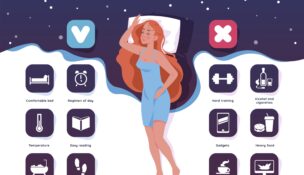Telehealth to Play Key Role as Geriatric Population Soars
Even though the population of older adults is rising, there’s no evidence that they’re in better health than previous generations.
Margaret Jackson //October 4, 2022//


Telehealth to Play Key Role as Geriatric Population Soars
Even though the population of older adults is rising, there’s no evidence that they’re in better health than previous generations.
Margaret Jackson //October 4, 2022//
Whether you’re looking for services for yourself or for an elderly family member, navigating the programs available for seniors is as important as it is complex. More seniors who need care face an industry with fewer medical specialists trained to meet their needs.
READ — Aging Smarter: Denver Doctor Gives Tips for Better Brain Health
The number of people age 60 and older will increase from 900 million in 2015 to 2 billion by 2050 — moving from 12% to 22% of the global population, according to the World Health Organization (WHO).
But even though the population of older adults is rising, there’s no evidence that they’re in better health than previous generations, which means they need to prepare for getting the care they need as they age.
The U.S. care services market is expected to reach $748.5 billion by 2030, expanding at a compound annual growth rate of 5.76%, according to a report from ResearchAndMarkets.com.
The growing geriatric population and rising incidences of diseases such as dementia, Alzheimer’s and orthopedic conditions are fueling the growth, while the increasing cost of treatment is one of the prime concerns for governments and health organizations.
And it’s only going to become harder to care for older adults as the baby boom generation — those people born between 1946 and 1964 — ages and the number of geriatricians declines.
However, the senior population of today has attained a level of comfort with technology that previous generations haven’t had.
READ — Robots Tapped as Companions for Seniors
“What’s challenging is this is a unique population,” said Dr. Wendee Gozansky, a geriatrician at Kaiser Permanente who also is chief quality officer. “They’re a bit more tech savvy, and we really need to use that to focus on the convenience needs they have.”
As the elderly population grows, telehealth technology offers practical ways to help seniors retain autonomy, stay safe and save money. Not many technologies can promise all that and convenience, too. Kaiser Permanente expects to use telehealth to meet the needs of aging seniors.
As people age, using telehealth technology and providing the health care and services they need all in one place is not only convenient, it also reduces the possibility the patient will suffer an injury from an accident. Technology can make it easier for seniors’ families to keep tabs on their loved one’s care and health status. Connected monitoring devices mean that elderly people can stay independent longer.
“When people are so old and frail, getting to pick up your medicine can be a risky sort of thing,” Gozansky said. “I had a patient who tripped in the parking lot and fractured her hip and couldn’t go home.”
A health-care provider like Kaiser Permanente provides seniors with one-stop shopping. They can get their hearing checked, glasses adjusted, pick up prescriptions and get a flu shot without having to drive all over town — a big plus for people who may be mobility challenged or have trouble parking or getting around in the snow.
“Kaiser is well-known for prevention,” Gozansky said. “We also have incredible specialty care.”
Kaiser’s goal is to help its older patients maintain as much function and independence as they can, said Dr. Tracy Lippard, a geriatrician at Kaiser Permanente and director of Complex Needs, Community Health & Government Programs.
One of Kaiser’s key strategies is to provide an annual total health assessment to its geriatric patients, who are asked to complete a survey that asks questions about physical activity and screens for depression and anxiety. The survey also covers hearing and vision, falling and balance, bladder issues and memory concerns.
“We want to know if they have issues with food insecurity and what their caregiver status is,” Lippard said. “All of these things really allow us to individualize care on the issues that matter most to them as they get older.”
Kaiser provides financial assistance to members who need it to ensure they take their blood pressure medicine so they don’t end up in the hospital with a heart attack or stroke.
“One of the stressors with everything going on right now is financial stress,” Gozansky said. “We have heard that loud and clear as a nonprofit organization.”
One of the biggest challenges facing the industry is the lack of geriatricians to care for older adults. Even though geriatrics is among the most rewarding specialties for doctors — studies show they’re the happiest specialists — most people in medical school don’t go into the field because many of the things geriatricians do for their patients are not reimbursed.
“Geriatricians are thinkers,” Lippard said. “We have discussions about nutrition and family conferences — things that take a lot of time and don’t get reimbursed. People have student loans and want to go into professions that allow them to pay them off.” That’s why Kaiser is “geriatrisizing” all of its integrated delivery systems, Gozansky said.
“We have 10 geriatricians in different roles,” she said. “We’re training to make sure every primary care doctor knows how to solve problems like incontinence.”
Jody Gastfriend, principal with Health Management Associates who is a licensed clinical social worker and national expert in senior care, said that whether a senior is on Medicaid or Medicare, understanding what services are covered is essential. She recommends seeking an expert to navigate this tricky terrain and suggests several resources seniors can tap.
Good sources of information include:
- The Area Agency on Aging (AAA), operated by the Denver Regional Council of Governments, which plans and provides comprehensive services to address the needs of the region’s older adults.
- State Health Insurance Assistance Program (SHIP), which offers one-on-one assistance, counseling and education to Medicare beneficiaries, their families and caregivers to help them make informed decisions about their care and benefits.
- Program of All-Inclusive Care for the Elderly (PACE), operated by Health First Colorado (the state’s Medicaid program) and Medicare, provides comprehensive medical and social services to certain frail people 55 years and older.
“Boomers are living longer — many are still working and many are caregivers,” Gastfriend said. “This generation of older adults, because life expectancy has increased, is still caring for parents and has adult children and grandchildren — it’s not just the sandwich generation, it’s the club sandwich generation between multiple generations.
“From a health-care perspective, there needs to be more understanding on lifestyle impact on health. There’s an emphasis on healthy aging and maintaining strength — both physical and mental — so a holistic approach to health care is ideal.”






















